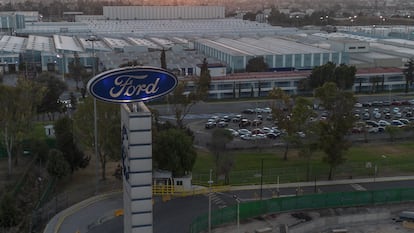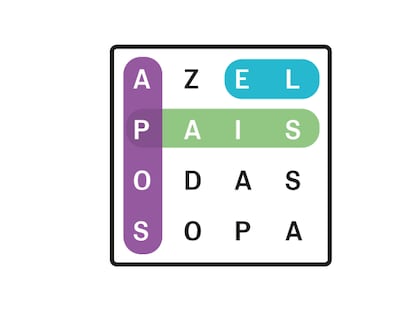Mexican auto industry on edge after Trump’s new tariffs on imported cars
Mexico’s exporters are confident they can bypass much of the tariff due to an exception: auto parts that meet USMCA requirements will be temporarily exempt

The Mexican automotive industry, the country’s largest exporter, is facing its biggest challenge in years. U.S. President Donald Trump has ordered the imposition of a 25% tariff on all vehicles not produced in the United States, effective April 3.
“We start off with a 2.5% base, which is where we’re at, and go to 25%,” the U.S. president declared during a press conference on Wednesday.
However, the order also stipulates that auto parts that meet the requirements of the United States–Mexico–Canada Agreement (USMCA) will remain tariff-free until trade authorities establish a process for applying tariffs to their non-U.S. content. This means Mexico and Canada will have the opportunity to certify their U.S. content to avoid part of the new tariff.
This concession by the Republican president is no small matter. Mexico is the leading exporter of automobiles to the U.S., with 2.9 million finished vehicles shipped in 2024, valued at $78.5 billion. When auto parts and engines are included, the total reaches over $182 billion, according to figures from the U.S. Department of Commerce. Mexican automotive exports account for nearly a third of the country’s total annual shipments to the U.S.
Trump defended his actions to protect the U.S. auto industry, which has been harmed by an influx of imports threatening the country’s industrial base and supply chains. “The 25% tariff will be applied to imported passenger vehicles (sedans, SUVs, crossovers, minivans, cargo vans) and light trucks, as well as key automobile parts (engines, transmissions, powertrain parts, and electrical components), with processes to expand tariffs on additional parts if necessary,” the White House said in a statement.
Under the framework of the USMCA — which replaced the North American Free Trade Agreement (NAFTA) implemented in 1994 — the Mexican automotive industry has flourished, becoming one of Mexico’s leading sources of foreign currency. In 1993, there were 10 light vehicle and engine manufacturing plants, represented by five brands. Today, more than 37 plants operate, with the capacity to produce five million vehicles annually.
By the end of 2024, Mexico exported 2.9 million units to the U.S., representing 80% of its production. According to U.S. figures, imports of Mexican automobiles, engines, and auto parts totaled over $182 billion last year alone, making Mexico the U.S.’s primary trading partner in this sector. Mexico’s leadership in automotive exports has resulted in a $139.4 billion trade deficit for Washington — an imbalance Trump aims to address through tariffs.
Gabriela Siller, director of analysis at Banco Base financial entity, argues that the impact on the Mexican economy will not be as severe if the safeguard allowing cars exported under the USMCA to remain tariff-free stays in place. “Obviously, there is an impact from the uncertainty, but not as much on exports, because 82% of cars exported to the U.S. comply with the USMCA. We believe this is all a Trump strategy to foster greater regional integration, so that more goods are shipped that comply with the USMCA criteria. All of this is intended to isolate China,” she says.
Guillermo Rosales, president of the Mexican Association of Automobile Dealers, believes that the measure will increase the price of vehicles manufactured in North America due to regional integration. “The impact will be different for each model depending on the integration with the United States,” he says.
Similarly, Adolfo Laborde, an international trade expert at Mexico’s Center for Research and Teaching in Economics (CIDE), notes that this tariff will significantly affect the Mexican sector due to the loss of competitiveness, a complicated situation considering that Mexico is already burdened by U.S. tariff on imports of Mexican steel and aluminum.
In 2020, with the renegotiation of the USMCA, the rules of origin for the automotive sector were significantly tightened compared to the previous version under NAFTA. Before 2020, the minimum percentage of regional content required to qualify for zero tariffs under the agreement was 62.5%. Starting in 2020, this rose to 75%. Additionally, new requirements were introduced, including the value of labor content and the minimum percentage of steel and aluminum purchased within the region.
Tariffs on one of Mexico’s strategic industries will have a ripple effect throughout the entire supply chain, from auto parts to logistics companies. This cascading effect will primarily impact the Bajío region and states such as the State of Mexico, Nuevo León, San Luis Potosí, Aguascalientes, Chihuahua, and Coahuila — regions that have heavily invested in the sector.
Experts have warned that a tariff of this magnitude will affect the broader economy, as automotive production is closely tied to transportation and wholesale trade. It will also bring an end to nearshoring, as half of the planned projects were linked to this industry. However, the concession made to Mexico and Canada under the USMCA raises new questions and tariff challenges. Specialists agree that the process of reviewing the regional content of automobiles will take several months, and determining what qualifies as “Made in the U.S.” will not be straightforward. Once again, Trump has put Mexico on edge.
Sign up for our weekly newsletter to get more English-language news coverage from EL PAÍS USA Edition
Tu suscripción se está usando en otro dispositivo
¿Quieres añadir otro usuario a tu suscripción?
Si continúas leyendo en este dispositivo, no se podrá leer en el otro.
FlechaTu suscripción se está usando en otro dispositivo y solo puedes acceder a EL PAÍS desde un dispositivo a la vez.
Si quieres compartir tu cuenta, cambia tu suscripción a la modalidad Premium, así podrás añadir otro usuario. Cada uno accederá con su propia cuenta de email, lo que os permitirá personalizar vuestra experiencia en EL PAÍS.
¿Tienes una suscripción de empresa? Accede aquí para contratar más cuentas.
En el caso de no saber quién está usando tu cuenta, te recomendamos cambiar tu contraseña aquí.
Si decides continuar compartiendo tu cuenta, este mensaje se mostrará en tu dispositivo y en el de la otra persona que está usando tu cuenta de forma indefinida, afectando a tu experiencia de lectura. Puedes consultar aquí los términos y condiciones de la suscripción digital.
More information
Archived In
Últimas noticias
NASA discovers Titan doesn’t have an ocean, but a ‘slushy ice layer’ that increases possibility of life
Innocence lost in the forest of the child soldiers: ‘Each leader of the armed group had his girls’
‘Fallout’ or how the world’s largest company turned an anti-capitalist apocalyptic Western into a phenomenon
From inflation to defending migrants: Eileen Higgins and Zohran Mamdani inaugurate the new Democratic resistance against Trump
Most viewed
- ‘El Limones’ and the growing union disguise of Mexican organized crime
- Christian Louboutin: ‘Young people don’t want to be like their parents. And if their parents wear sneakers, they’re going to look for something else’
- The low-cost creative revolution: How technology is making art accessible to everyone
- A mountaineer, accused of manslaughter for the death of his partner during a climb: He silenced his phone and refused a helicopter rescue
- Liset Menéndez de la Prida, neuroscientist: ‘It’s not normal to constantly seek pleasure; it’s important to be bored, to be calm’











































